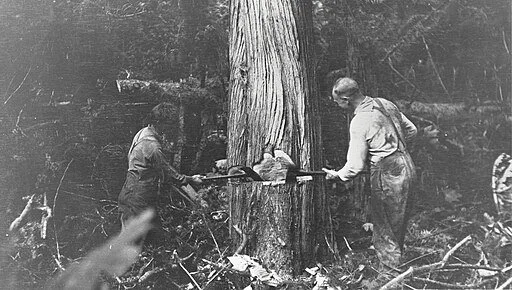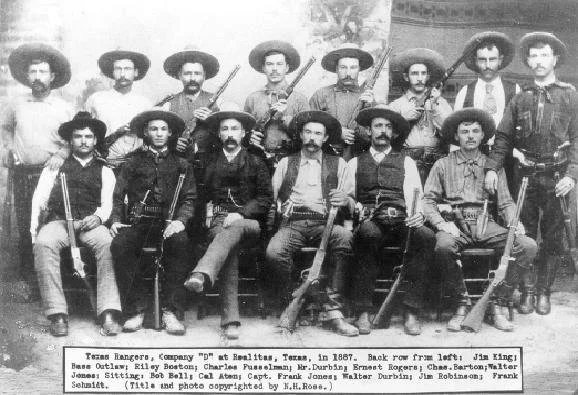Wilderness Cutting Tools Introduction
Understanding the basics of wilderness cutting tools is important to choose the right tool for your trip.
Whatever job you have to do, it helps to have the right tools. The right tool can make a job a piece of cake. The wrong tool leads to frustration and poor results. Of course, when camping, it’s not always possible, practical, or desirable to bring all the perfect tools for all the tasks you may have to do. It would simply be too much gear. However, understanding what you’ll need from your cutting tools can help you choose the right one for your situation.
When it comes to wilderness cutting tools, there are really three big categories. Saws, chopping tools, and knives. Each type of tool is designed for a specific type of job. Each category also has sub-types that are designed for more specific functions. Understanding the basics of each category, and the function of each sub-type, can help you choose the wilderness cutting tool that best suits your needs.
Saws
Saws are cutting tools that usually use a thin metal blade with cutting teeth on one edge. Saws are good tools for making clean and straight cuts through wood. In the wilderness, they are good for cutting shelter poles and for clearing trails of downed timber. However, there are different styles of saws that each have their own advantages and disadvantages. Let’s take a look at the different types of saws you can employ.
Traditional Crosscut Saw
First on the list is the traditional crosscut saw. These feature a large blade and can either be a one-man or two-man design. Historically, these were the chainsaws of the world. If you have lots of work to do, they are the workhorse you might need. Their biggest advantage is their output. You can cut a lot of wood with one. Their downside is their size. These saws can be big, bulky, and hard to pack. That being said, some crosscut saws are small enough to fit in a scabbard under your stirrup fender.
Take-Down Saws
One of the most practical saws for wilderness camping is the take-down saw. Take-down saws are good tools that woodsmen have used for a long time. Although they have different styles, they all can be “taken down” into smaller pieces. The ability to be easily packed makes them popular with woodsmen of all kinds. Their big advantage is their portability. Their big disadvantage is the fact that the frame can limit how big of a log you can cut.
Folding Saws
Another practical saw that has become more popular within the past few decades is the folding saw. As you might imagine, the folding saw is a saw that folds in upon itself. These fit into a category between the traditional crosscut saws and the take-down saws. A big folding saw allows you to cut larger trees than a take-down saw, but they are more portable than a traditional crosscut saw. These days, the most popular folding saw seems to be the lineup of Silky saws.
Chainsaw
Finally, there is the chainsaw to consider. Chainsaws are the most productive saw you can get for wilderness use. There really is no debate on that. Developments in new battery technology have also made the electric chainsaws a good option for woodsmen. However, they do have some downsides. First, they are not as reliable or “off-grid” as the other saws on the list and they are also the bulkiest saw. Finally, if you plan on going to a wilderness area, they are illegal.
Chopping Tools
Chopping tools are another basic category for wilderness cutting tools. This family of tools generally resembles each other, but they differ based on some intentional design features.
Axe
For the sake of this post, we’ll define axes as chopping tools that are designed to be used with both hands. They can have one cutting edge or two (one-bit or two-bit). The purpose of a double-bit axe is to have two different bevels on the axe head, making it a multitool of sorts. Most average campers would probably benefit from a single-bit axe. These axes have the cutting edge but also have a poll (or butt) that can serve as a light hammering tool. In the family of chopping tools, axes are capable of doing the most work. However, they do require the most space to pack.
Hatchets
Hatchets are smaller axes designed to be used one-handed. As a result, hatchets have always been popular with outdoorsmen who have tried to minimize their weight and size. Their advantage is they are more portable than a large axe and still capable of multi-use. On the downside, their small size makes them impractical for big jobs.
Tomahawks
Traditionally, tomahawks were designed for war. They differ from hatchets and axes, but more closely resemble hatchets. The biggest resemblance is their size. Like hatchets, they are designed to be used one-handed. However, tomahawks are built lighter and lack the heavy poll of a hatchet. Tomahawks swing faster, and if you’re planning to cut small limbs, they might be a good choice. Personally, I like tomahawks, but their big downside is the fact they are not good hammering tools. As a result, they are not as practical as a hatchet for long-term camping.
Knives
The final wilderness cutting tool is the knife. Knives are universal in every home, so they really need no explanation of what they are. When it comes to wilderness knives, there are several main categories. They are fixed blades, folding blades, and replaceable blades. Let’s start by taking a look at the fixed blade knives.
Fixed Blade
Fixed blade knives refer to any knife that has a permanently fixed blade. This Knot Wrench knife is a good example. Fixed blade knives are the most resilient, and as a result, can to the most variety of tasks. These are their greatest assets. Like with everything, they do come with some disadvantages. One disadvantage is they can be inconvenient to carry. This is why I like the pancake or cross-draw sheath. Both styles of sheath keep the knife out of your way. The other disadvantage is that you must know how to sharpen the knife. A dull knife is a dangerous knife.
Folding Blade
Folding blade knives are popular pocket knives. They feature a blade that usually rotates inward on itself, the same as a folding saw. Folding blade knives can be more convenient and sometimes safer to carry than fixed blade knives. However, the fact that the blade pivots can cause some problems. The problem arises when the blade unexpectedly folds. This has happened to more than a few woodsmen. Like a fixed blade, folding blade knives must be routinely sharpened.
Replaceable Blade
Finally, the replaceable blade knives are a relatively new comer to the scene. Businesses recognize that many people either can’t or don’t want to, sharpen their knives. As a result, they make a variety of different styles where the user can simply swap out an old blade for a new and razor-sharp one. The biggest advantage of replacement blades is always having a sharp edge. For camping purposes, the downside is their lack of durability and the fact that you need to carry replacement blades. Although technically you could resharpen the blade, that seems to defeat the purpose of these knives.
My Picks
For what it’s worth, these are my picks when it comes to wilderness cutting tools.
1st Pick: Fixed blade knife carried in pancake sheath.
For me, this is the tool I need the most. I like to have a knife whenever I go outside. The fixed blade gives me durability and the pancake sheath keeps it out of the way.
2nd Pick: Hatchet
If I’m going to the woods, I typically like to bring a hatchet. In the areas I generally travel in, I don’t need a major cutting tool. The hatchet can handle the firewood chores and I use the heavy poll for light hammering work.
3rd Pick: Take-Down Saw
At this point, if I’m going somewhere and know I need a saw I’m packing a take-down saw. The main reason for this is cost. I built my own take-down saw for about $20. A good folding saw can easily run over $100 or more. Because I don’t have a tremendous use for it, I haven’t bought one yet. However, I can and would borrow a good folding blade saw if I was traveling in an area where clearing trail was going to be a problem. Eventually, I would like to have this Katanaboy folding saw, but at the current moment, I don’t need it for the locations I camp in.
Although these are my picks for wilderness cutting tools, each person has to understand their own situation. As mentioned, a saw is not necessary for me. But, I’ve been on trips where a saw was what kept the party moving. It all depends. Hopefully, this article can help you understand the basic wilderness cutting tool categories and decide what to take on your next outing.



